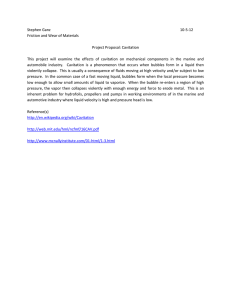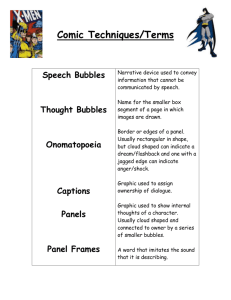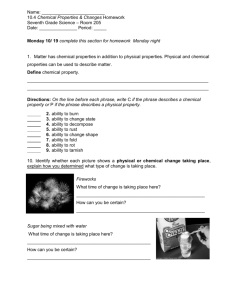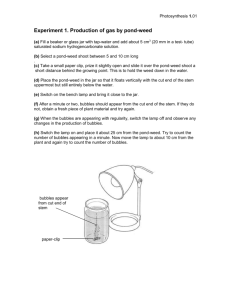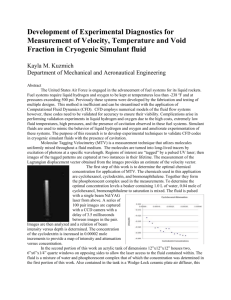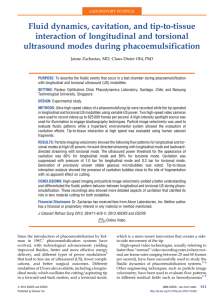Claus-Dieter OHL - School of Physical and Mathematical Sciences
advertisement
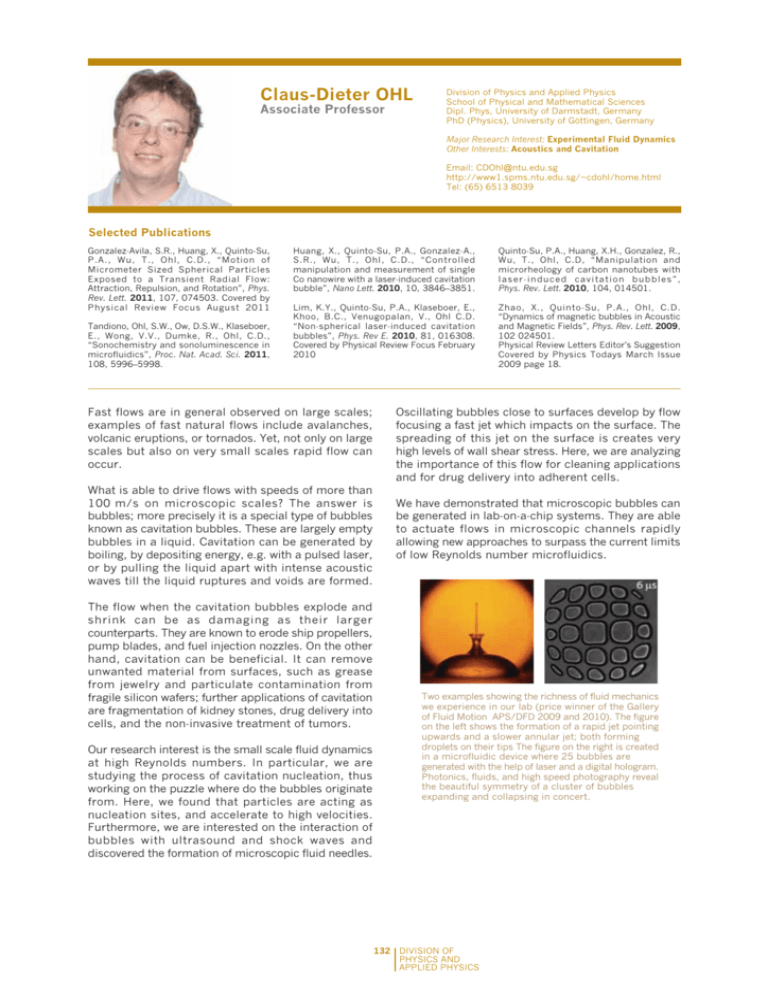
Claus-Dieter OHL Associate Professor Division of Physics and Applied Physics School of Physical and Mathematical Sciences Dipl. Phys, University of Darmstadt, Germany PhD (Physics), University of Göttingen, Germany Major Research Interest: Experimental Fluid Dynamics Other Interests: Acoustics and Cavitation Email: CDOhl@ntu.edu.sg http://www1.spms.ntu.edu.sg/~cdohl/home.html Tel: (65) 6513 8039 Selected Publications Gonzalez-Avila, S.R., Huang, X., Quinto-Su, P.A., Wu, T., Ohl, C.D., “Motion of Micrometer Sized Spherical Particles Exposed to a Transient Radial Flow: Attraction, Repulsion, and Rotation”, Phys. Rev. Lett. 2011, 107, 074503. Covered by Physical Review Focus August 2011 Tandiono, Ohl, S.W., Ow, D.S.W., Klaseboer, E., Wong, V.V., Dumke, R., Ohl, C.D., “Sonochemistry and sonoluminescence in microfluidics”, Proc. Nat. Acad. Sci. 2011, 108, 5996–5998. Huang, X., Quinto-Su, P.A., Gonzalez-A., S.R., Wu, T., Ohl, C.D., “Controlled manipulation and measurement of single Co nanowire with a laser-induced cavitation bubble”, Nano Lett. 2010, 10, 3846–3851. Quinto-Su, P.A., Huang, X.H., Gonzalez, R., Wu, T., Ohl, C.D, “Manipulation and microrheology of carbon nanotubes with laser-induced cavitation bubbles”, Phys. Rev. Lett. 2010, 104, 014501. Lim, K.Y., Quinto-Su, P.A., Klaseboer, E., Khoo, B.C., Venugopalan, V., Ohl C.D. “Non-spherical laser-induced cavitation bubbles”, Phys. Rev E. 2010, 81, 016308. Covered by Physical Review Focus February 2010 Zhao, X., Quinto-Su, P.A., Ohl, C.D. “Dynamics of magnetic bubbles in Acoustic and Magnetic Fields”, Phys. Rev. Lett. 2009, 102 024501. Physical Review Letters Editor's Suggestion Covered by Physics Todays March Issue 2009 page 18. Fast flows are in general observed on large scales; examples of fast natural flows include avalanches, volcanic eruptions, or tornados. Yet, not only on large scales but also on very small scales rapid flow can occur. What is able to drive flows with speeds of more than 100Êm/s on microscopic scales? The answer is bubbles; more precisely it is a special type of bubbles known as cavitation bubbles. These are largely empty bubbles in a liquid. Cavitation can be generated by boiling, by depositing energy, e.g. with a pulsed laser, or by pulling the liquid apart with intense acoustic waves till the liquid ruptures and voids are formed. The flow when the cavitation bubbles explode and shrink can be as damaging as their larger counterparts. They are known to erode ship propellers, pump blades, and fuel injection nozzles. On the other hand, cavitation can be beneficial. It can remove unwanted material from surfaces, such as grease from jewelry and particulate contamination from fragile silicon wafers; further applications of cavitation are fragmentation of kidney stones, drug delivery into cells, and the non-invasive treatment of tumors. Our research interest is the small scale fluid dynamics at high Reynolds numbers. In particular, we are studying the process of cavitation nucleation, thus working on the puzzle where do the bubbles originate from. Here, we found that particles are acting as nucleation sites, and accelerate to high velocities. Furthermore, we are interested on the interaction of bubbles with ultrasound and shock waves and discovered the formation of microscopic fluid needles. Oscillating bubbles close to surfaces develop by flow focusing a fast jet which impacts on the surface. The spreading of this jet on the surface is creates very high levels of wall shear stress. Here, we are analyzing the importance of this flow for cleaning applications and for drug delivery into adherent cells. We have demonstrated that microscopic bubbles can be generated in lab-on-a-chip systems. They are able to actuate flows in microscopic channels rapidly allowing new approaches to surpass the current limits of low Reynolds number microfluidics. Two examples showing the richness of fluid mechanics we experience in our lab (price winner of the Gallery of Fluid Motion APS/DFD 2009 and 2010). The figure on the left shows the formation of a rapid jet pointing upwards and a slower annular jet; both forming droplets on their tips The figure on the right is created in a microfluidic device where 25 bubbles are generated with the help of laser and a digital hologram. Photonics, fluids, and high speed photography reveal the beautiful symmetry of a cluster of bubbles expanding and collapsing in concert. 132 DIVISION OF PHYSICS AND APPLIED PHYSICS
